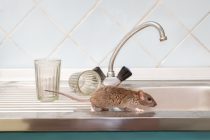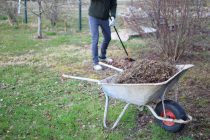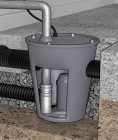Find out what to do if your plumbing springs a leak and you need a quick fix. Learn how to do it yourself before you can get a permanent fix with some helpful tips and advice from Lou Manfredini, Ace's Home Expert!
Prep
Stop the water immediately by shutting off the main water valve. You'll need to figure out what material your pipes are made out of so you can be sure you get a compatible material. It might help to bring a picture of your pipes into your Neighborhood Ace for some extra help. Some key identifiers of different materials include:- Galvanized pipe: Typically Silver. Runs for hot and cold water.
- White PVC: White in color. Typically used for cold water, drain and vent.
- CPVP: Yellower in color. Used for hot and cold water.
- Copper pipe: Copper. Comes in different sizes.
- PEX pipe: Red for hot water. Blue for cold water.
Connection Leaks
Fiberglass wrap or patch products are usually water activated. Mix the ingredients in the package and then wrap the area of the leaking pipe with the patch. As it dries, it cures and becomes hard like a cast.Epoxy putty is usually activated when you take the two parts and knead them together. Dry the surface of the pipe, then apply the putty over and around the leak. Let it cure.
Self fusing silicone tape bonds to itself as you wrap it around the leak. Stretch the tape to get it tight, overlap the tape on each pass, and go beyond the leak on both sides. This should only be used on minor leaks or low pressure pipes. When going back to do a permanent repair, this tape is easy to remove because it does not attach to the pipe, only to itself.
Mid-Run Leaks
Repair clamps can work well for leaks in the middle of a pipe run. Chose one for the same size pipe. You want a snug fit, without over tightening the clamp. Place a rubber gasket on the leak, then put the clamp over gasket and around the pipe. Tighten the clamp.A compression coupling seals the edge of the pipe as you tighten it. Use a hacksaw or a pipe cutter to cut out the damaged section of pipe. Slip in the coupling and then tighten.
Push fittings require a couple of tools specific to the manufacturer. Remove the damaged section of the pipe and use the deburring tool on the edges. Slip on the coupling and use the special tool to adjust and the connection is secure.
Helpful Tips
- Don't put off permanent repairs. A temporary fix can get you by for a little while, but you want to avoid larger issues down the road by getting it fixed as soon as possible.
- Check labels for any products you use. Results will be best when you follow the instructions on the packaging.
- If the leak leads to a drinking water supply, make sure the product you choose is safe for that use.
- Make sure the product you use is compatible with the material of your existing pipe.
- DO NOT repair natural gas pipes on your own. Contact your utility company if you smell gas or suspect a leak. Call a professional immediately, and let the pros handle more dangerous tasks like this.
Published: 3/11/2020



